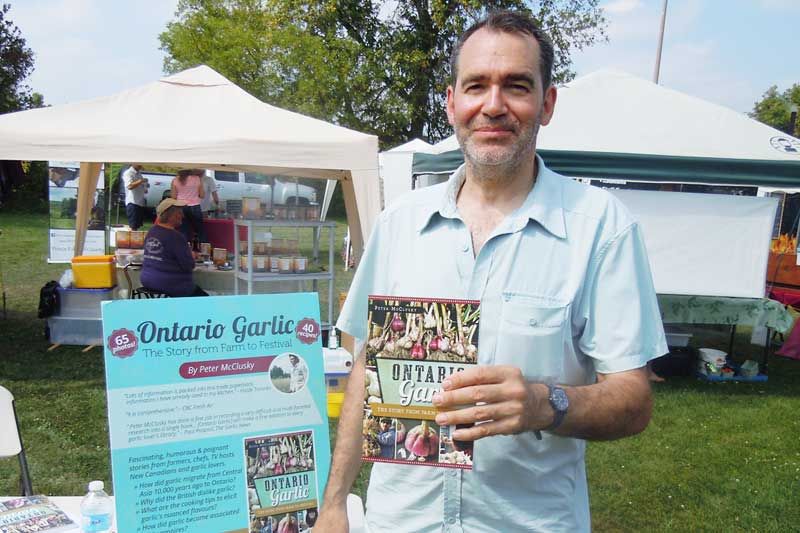Julie Druker | Sep 09, 2015
Garlic enthusiasts will be pleased to know that a brand new book titled “Ontario Garlic: The Story from Farm to Festival”, published by The History Press in July, 2015 is now available for those interested in how attitudes towards the stinky bulb have changed.
Toronto author Peter McClusky spent a year and a half digging deep into hundreds of years of archival material to write the book, which explains how garlic arrived in Ontario, and how the attitude towards it has drastically changed over the years. He cites the changes as the result of changing immigration laws in Canada in the 1970s. “At that time people arrived in Ontario, brought their cooking with them and with that... their love of garlic. Up until then we were a mostly Anglo-population with an Anglo appreciation of garlic that was not only very conservative but actually quite negative”.
McClusky gives examples of these negative attitudes in the book. One was taken from the minutes of a teachers' meeting from a school near Sudbury in 1928 where the teachers there were considering if they should be allowed to send children home who smelled of garlic and who in the end decided to do so.
In another example he tells of a woman he interviewed who lived on a farm in small town in Ontario in the 1940s, whose parents were Ukrainian and how she loved to put on a dress and sing. Her one and only opportunity to do so was at her Sunday school but the Sunday school teacher told her she could do so only if she stopped eating garlic. “Imagine what kind of attitude that would put in this little girl's mind and the mind of her parents.”
In the book McClusky looks back further to 10,000 years ago and explains how garlic came from central Asia. He describes how it arrived here and how it was both popular and reviled at the same time. The big turnaround came, as previously mentioned, in the 1970s. “As people in Ontario became exposed to new cuisine from other parts of the world, they realized that this cuisine often included garlic as an ingredient and so their attitudes began to change”.
McClusky also cites changing attitudes towards garlic using a sociological and anthropological perspective and in the book explains that certain experiments show how human taste actually works. “What we think of the taste of something can often be quite different from its real taste and this occurs often from a negative association we may have or may have inherited.”
McClusky, who is from Toronto, had a booth at this year's Verona Garlic Festival and was selling and signing copies of his book. He has been growing garlic near Toronto since 2009, has interned on a farm, and also founded and runs the Toronto Garlic Festival, now in its fifth year. He said he is interested in promoting not only Ontario garlic but also other locally grown produce in the province. “People should get away from only thinking about the price of locally grown food and consider more how good it tastes and how is it is being grown by farmers right in their own back yard”.
McClusky definitely did his homework in his effort to arrive at “a deep understanding of garlic.” He interviewed 150 people for the book, including farmers, chefs, gardeners, older residents, and scientists. The book also includes maps, illustrations plus 40 recipes, many by famed Ontario chefs, with more obscure recipes that include desserts like ice cream and brownies. As well it has tips on growing garlic and information about its medicinal qualities. McClusky said he is very excited about the positive response he is getting to the book, which he said is likely due to the fact that he wanted to write a book that he himself would like to buy and read. The book is available in book stores and online at Indigo and Amazon.
More Stories
- Harrowsmith Public School and the Magic of Theatre
- You’re a Good Man Charlie Brown – a school wide effort at SHS
- Leadership From Within
- New Bulk Water Station in Sydenham
- Frontenac County Council looks at Healthcare Recruitment
- Good Turn Out Maple Fest Despite Rain
- Future looking brighter for Denbigh Fire Department says Chief
- Local Favourites featured at 2nd Annual SF Music Festival
- Perth Festival of the Maples, Saturday, April 27
- South Frontenac Council

